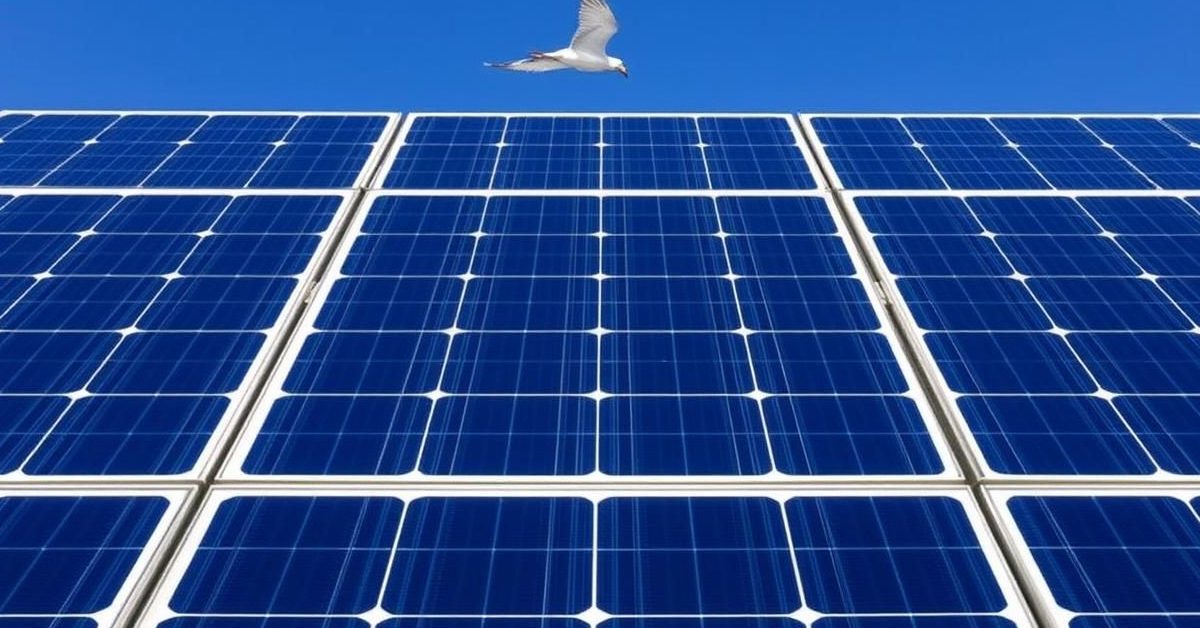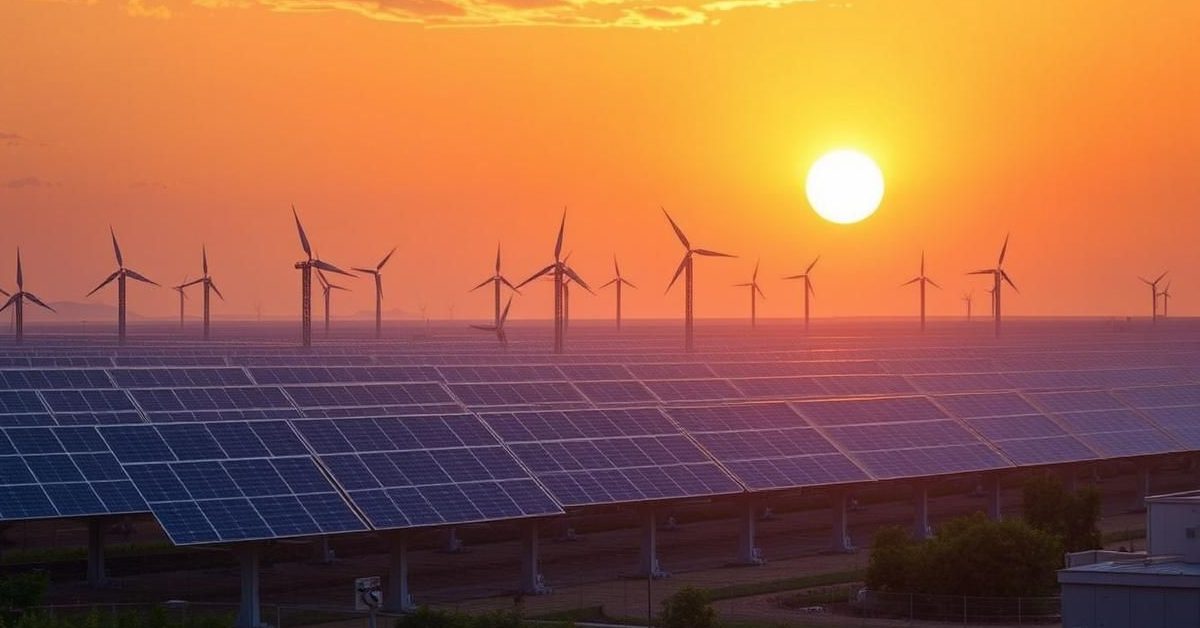Unlocking the Sun’s Secrets: The Deep Science Behind Solar Energy
India’s recent surge in solar photovoltaic (PV) cell imports from China, a staggering 141% increase, spotlights a critical question: how exactly do these ingenious devices turn raw sunlight into the electricity that powers our lives? It’s a journey rooted in groundbreaking scientific discoveries, spanning centuries, and evolving at a rapid pace. Beyond the simple blue panels, there’s a complex interplay of quantum physics, material science, and relentless human innovation.
From Faraday’s Spark to Einstein’s Light: A Historical Odyssey of Power Generation
For centuries, our world’s primary method of generating electricity has relied on Michael Faraday’s profound discovery in 1821 – electromagnetic induction. This principle, which became commercially viable by the late 1800s, remains the colossal engine behind most global power grids. Yet, a quieter, more radical idea was also taking root. In 1839, a brilliant young French physicist, Alexander Becquerel, observed a peculiar phenomenon: certain materials produced a voltage when exposed to light. This was the birth of the photovoltaic effect, a concept that would lay dormant for over a century before truly illuminating our future.
The real breakthrough came in 1954, when a team of visionary researchers at Bell Labs – Daryl Chapin, Calvin Fuller, and Gerald Pearson – crafted the very first practical silicon solar cell. Their success wasn’t born in a vacuum; it stood on the shoulders of two titans. One was Albert Einstein, who, for his explanation of the photoelectric effect (the very mechanism behind PV cells), received the Nobel Prize. The other was Polish chemist Jan Czochralski, whose pioneering method for growing single-crystal silicon became the bedrock of modern solar cell manufacturing.
Beyond the Grid: Diverse Applications of Solar Power
It’s crucial to understand that not all solar technology is designed to feed electricity into the national grid. While photovoltaic systems are engineered to produce regulated, tradeable power, other solar innovations operate as standalone solutions. Think of solar water heating systems, which simply capture the sun’s thermal energy to warm water, or even sophisticated solar cooling systems that can drop indoor temperatures to a comfortable 19°C even when outside it’s a scorching 40°C. These decentralized applications are akin to PV panels powering remote communication stations or providing basic lighting in off-grid communities.
The sun’s energy is undeniably abundant, yet it’s also incredibly diffuse, spread thinly across vast areas. This fundamental characteristic necessitates ingenious solutions. Technologies like parabolic troughs and Fresnel lenses, for instance, are specifically designed to concentrate sunlight, channeling its power for a multitude of purposes – from heating and cooking to water desalination or even generating high-temperature electricity in concentrated solar power (CSP) plants.
The Quantum Dance: How Sunlight Becomes Electricity in PV Cells
At the heart of every solar panel lies the photovoltaic cell, typically crafted from semiconductors like elemental silicon. Unlike metallic conductors such as copper, whose resistance generally increases with temperature, silicon exhibits unique behavior. At room temperature, it’s a poor conductor, but its conductivity remarkably increases as it heats up, classifying it as a “non-Ohmic” material. This unusual property is key to its role in solar energy.
To truly grasp how light turns into power, we need a peek into the quantum realm. Electrical conduction hinges on electrons occupying a higher energy quantum state, known as the “conduction band,” where they can flow freely, much like water in a vast ocean. Conversely, electrons in the lower-energy “valence band” are bound, unable to contribute to an electric current. For these valence electrons to make the leap to the conduction band, they require an energy boost – an energy that can originate from intense thermal motion (heat) or, more directly, from light.
Light, when viewed as packets of discrete energy called photons, holds the key. When these photons strike electrons residing in the valence band, they can transfer their energy. If a photon’s energy is precisely matched to, or exceeds, the “band gap” – the energy difference between the valence and conduction bands – it can kick an electron into the higher-energy conduction band, setting the stage for electricity generation. However, here lies a critical nuance: if the photon’s energy is significantly higher than the band gap, the excess energy is simply wasted as heat, diminishing efficiency.
The Art of Doping: Engineering Silicon for Maximum Power
This energy matching criterion explains why approximately 50.4% of the total solar spectrum is inherently unusable for crystalline silicon PV cells. About 20.2% of photons carry too little energy to cross silicon’s band gap, while a substantial 30.2% carry too much, with the excess energy being dissipated as unproductive heat. While other semiconductor materials like gallium arsenide, cadmium telluride, and copper indium selenide can capture different portions of the solar spectrum, their scarcity, handling complexities, and environmental toxicity often limit their widespread application.
The genius of silicon solar cells lies in a process called “doping.” Tiny, precise amounts of impurities – typically phosphorus (which adds excess electrons) and boron (which creates “holes,” or electron deficits) – are introduced into the silicon. This meticulous engineering creates distinct regions with an abundance of negative charges (n-type silicon) and positive charges (p-type silicon), forming what is known as a *p-n junction*. This junction acts like a built-in electric field. When sunlight illuminates the material, it excites electrons and holes, and the p-n junction expertly separates them, creating an electric potential, much like a tiny battery. Connect an external load, and these separated electrons will dutifully flow, completing the circuit and generating current. This miraculous process can continue indefinitely as long as light is available.
However, even with the “usable” 49.6% of the solar spectrum, additional losses occur. PV cells inevitably heat up, often reaching 30–40°C above ambient temperature, which accounts for around 7% energy loss through heat radiation. Another 10% loss stems from the “saturation effect,” an imbalance in charge mobility that gradually weakens the electric potential over time. These combined factors lead to the theoretical maximum efficiency for single-junction silicon solar cells, known as the **Shockley-Queisser limit**, which stands at 33.7%. In the real world, further inefficiencies emerge from varying illumination conditions across cells and slight production variances. Considering all these factors, the average efficiency of crystalline PV cells under ideal laboratory conditions is around 25%, with the best commercial cells typically achieving about 20%. For comparison, nature’s own photosynthesis, while awe-inspiring, only captures 3-6% of available solar radiation energy.
From Raw Sand to Renewable Energy: The Manufacturing Challenge and Cost Evolution
Naturally occurring silicon is highly reflective, which is why an anti-reflection coat, often made of tin oxide or silicon nitride, is applied, giving solar cells their characteristic blue hue. While biological photosystems assemble proteins at ambient temperatures, PV systems demand significant energy input for their creation. The production journey begins with the meticulous purification of elemental silicon to 99% purity using the Czochralski process – a method involving melting silicon and carefully crystallizing it into large, single-crystal ingots.
Slicing these purified ingots into thin wafers is a critical step, but it’s also inefficient, resulting in approximately 20% material loss as silicon dust. This high cost associated with single-crystal technology has spurred the development of alternative methods, such as ribbon technology, which largely bypasses the need for sawing. Amorphous silicon-based cells, though less efficient, offer a lower-cost alternative, with inherent crystal defects often mended by alloying them with hydrogen. Breakthroughs in multijunction amorphous cells have seen theoretical efficiencies reach up to 42%, with practical applications achieving around 24%.
PV technologies are typically categorized into three generations: first-generation uses thick crystalline wafers (around 200 µm), second-generation employs thinner wafers (1-10 µm), and third-generation pushes the boundaries with multi-junction tandem cells and quantum dots. These advanced materials are designed to generate more charge separation per photon, enabling some to potentially surpass the traditional Shockley-Queisser efficiency limit.
The financial trajectory of PV electricity has been remarkable. The price, measured in dollars per watt of direct current (DC) peak power, plummeted from $4–5 in 2010 to $2.8 in 2023, with utility-scale systems reaching as low as $1.27. This aligns closely with the ambitious US Department of Energy’s SunShot program, which targeted $1 per watt for installed systems.
Breaking down the system costs reveals where future reductions are most likely. Modules account for about 38%, power electronics (primarily inverters) 8%, wiring and mounting 22%, and a significant 33% falls under “hardware balance systems,” encompassing labor, permits, overhead, and profit. With single-crystal PV cells approaching their theoretical maximum output, the greatest potential for further cost reduction lies squarely within these hardware balancing categories.
The Complexities of Solar: Environmental Considerations and Practical Challenges
Solar modules are robust, typically losing only about 0.5% efficiency annually and remaining effective for 20–25 years. Counterintuitively, while tropical and desert regions receive abundant sunlight, PV modules often perform more efficiently in cold, clear conditions. This is due to lower thermal losses; as discussed, excess heat diminishes performance. This presents a challenge for the widespread dominance of PV in many low- and middle-income countries located in tropical or equatorial regions, where climatic and infrastructural constraints can limit their effectiveness.
Furthermore, real-world environmental factors pose significant hurdles. Rising air pollution can reduce solar insolation by 2–11%, while the accumulation of dust and dirt (soiling) on panels contributes a further 3–4% annual output loss. Regularly cleaning these panels is not only a hazardous task—as cells remain electrically active under sunlight—but also often a water-intensive process, especially in arid regions. In densely populated areas, the sheer number of PV installations can trap substantial amounts of heat, potentially exacerbating the urban heat island phenomenon.
While other solar technologies can complement PVs, their collective role in achieving truly carbon-neutral energy generation remains a vibrant and ongoing scientific debate, constantly pushing the boundaries of what’s possible in sustainable power.















